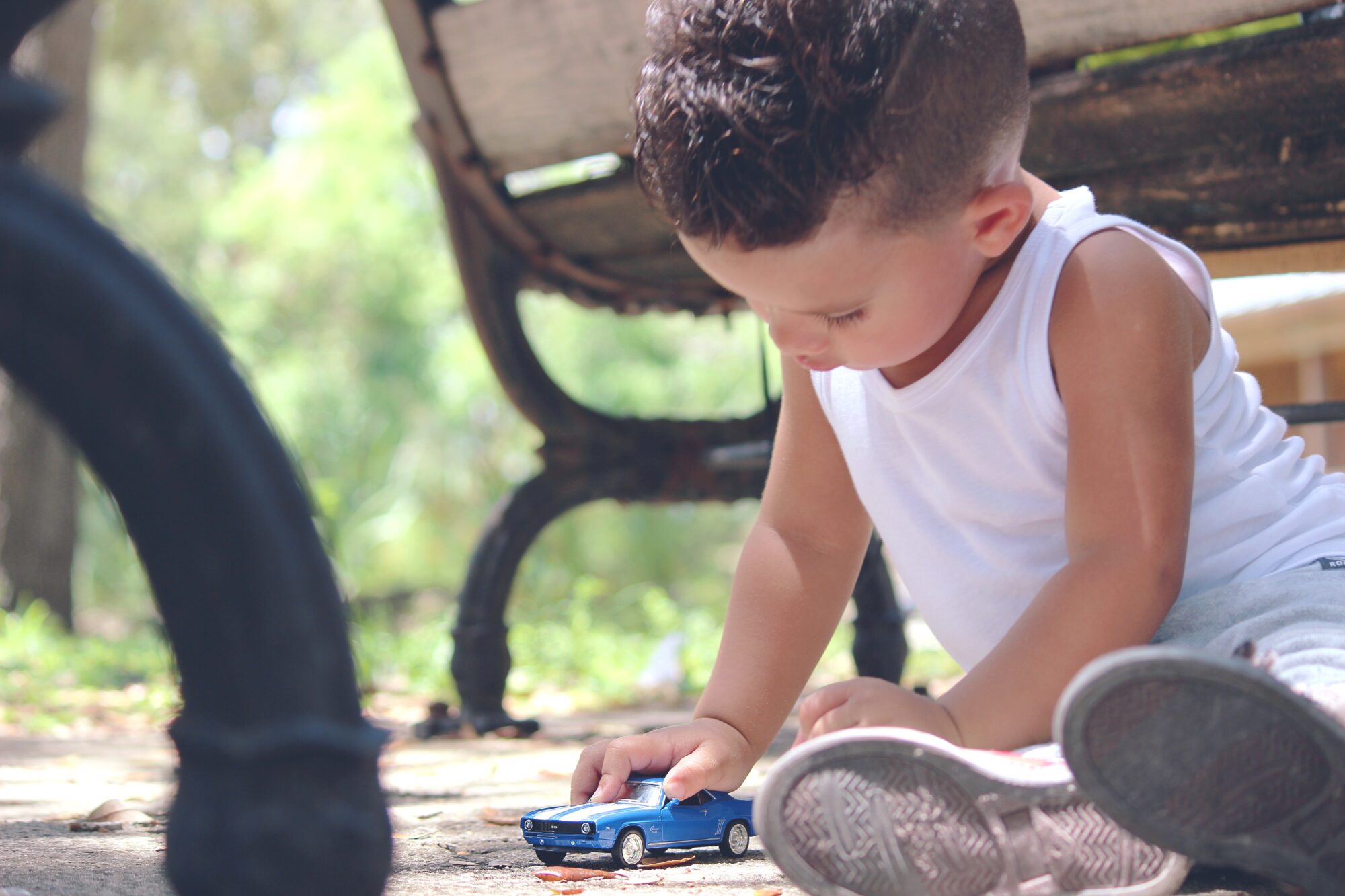Your Autistic Child: When is Repetitive Behavior a Problem?

Repetitive behavior can be alarming for the parents of autistic children. It looks “abnormal” and we worry that it may be bad for them. However, repetitive behavior can be very therapeutic for your child. They may find it relaxing and calming, or they may simply enjoy a certain thing so much that they want to do it over and over.
A simple way to evaluate a repetitive action is to ask yourself if there’s any harm in it. If not, there’s no real reason to prevent your child from doing it. For example, bounce houses and children with autism are often good “friends” with the child using bouncing as a calming activity or to gain sensory input. Let’s try to understand this phenomenon and look at instances in which repetitive behavior could be a problem you should act on.
Low and High Order Repetition
Strange and repetitive vocalizations ranging from grunting to repeating certain phrases, hand-flapping, or rocking are examples of what scientists term “lower order” repetitive behavior. “Higher order” repetition can also be important. For example, insisting on a certain way of doing things, and being very attached to routine and structure. Quite often, children resort to lower order repetition when higher order repetition is disrupted – one more reason to develop and stick to schedules.
It’s the lower order range of behaviors that’s most likely to be upsetting to observers, and until recently, doctors believed that eliminating them completely was helpful. However, a newer approach suggests that if your autistic child gains benefits from certain forms of repetition, it should be understood and accommodated.
Signs that a Behavior is Excessive
If you notice that your child seems unable to stop an activity on their own, or that it is becoming an obstacle to learning, you may have cause for concern. And, of course, if the behavior is disruptive, harmful, or completely socially unacceptable, it’s definitely something you should act on.
Depending on how the activity affects your child, you may need some help in weaning them away from a behavior that isn’t just repetitive, but obsessive or harmful. Consult professionals if you aren’t coping.
What You Can Do to Improve Matters
If a repetitive activity does seem calming and not harmful in itself, try working time into the day for your child to enjoy the repetitive activity. Working it into the daily schedule makes it part of the structured day that helps autistic children to cope. It also means that there’s a “time” for it, and a time when it must stop and do something else.
If you aren’t already doing so, develop a visual schedule that your child can understand. Use colors or pictures to show what happens when and offer a little reward for completing activities, for example, placing a shiny sticker next to each completed activity. All children benefit from routine, and autistic children absolutely need it. So once you’ve developed processes like a bedtime routine, be sure to play your part in the ritual.
Remember that there is a reason for everything. Observe your child and see what triggers the behavior. Reasons may include enjoyment, a way of gaining sensory input or reducing it, or a way of escaping stress and uncertainty. In the latter case, you will gain insight into what upsets your child. Keep a carer’s diary recording as many details about your child’s day as you can. Look for patterns that indicate why he or she reverts to repetitive behavior.
Understanding Stress
Autistic children quickly become stressed when things seem unpredictable or out of control. This could relate to changes to their routine or outside stimuli they find upsetting, for example, high noise levels. Simply feeling unwell can be a trigger and so can sensitivity to certain foods. For instance, over 90 percent of autistic children are sensitive to dairy products and eggs and around 80 percent are sensitive to gluten.
If you think your child is self-soothing, try to find the cause of the problem. While food issues will mean changing menus, do try gradually desensitizing them to other forms of environmental stress. For example, if having visitors over upsets your child, simply prepare them for it. If busy environments are a problem, limit exposure, but try challenging them to tolerate short periods in busy places. Monitor them carefully, and remove them to a quieter place if you see signs of discomfort.
While it’s possible to avoid certain types of stress without developmental harm, helping your child to deal with things that are bound to occur in everyday life will prepare them for a more independent future.
Time is Key
If you have cause for concern other than that a behavior is somewhat strange, break the habit, try finding a substitute, or get help as soon as you are able. If it’s something that’s just a bit odd, you can look for ways to reduce your child’s need for it, but this will mean understanding the “why.”
You can try weaning your child from the behavior or encouraging them to only engage in it when they are in private as they grow older. After all, you would like them to be able to cope with social interactions, and if their craving for repetitive actions gets in the way, it becomes a developmental barrier. Explain your goal in simple terms and decide on weekly targets together if possible, gradually reducing the allocated time from week to week.
Remember that you don’t have to cope on your own. There are experts who can help you with behavioral problems in autistic children, and it’s worth consulting them when the going gets tough.

Leave a Reply
You must be logged in to post a comment.